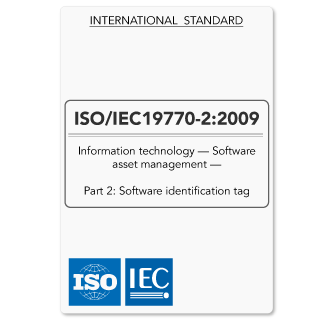
ISO/IEC 19770-2:2009 Information technology – Software asset management – Part 2: Software identification tag.
ISO/IEC 19770-2:2009 establishes specifications for tagging software to optimise its identification and management. A software identification tag is an XML file containing authoritative identification and management information about a software product.
ISO19770-2 supports software asset management processes as defined in ISO19770-1, and is also designed to work together with the future ISO19770-3, which will provide a standard for software entitlement tags.
Software identification tags will benefit all stakeholders involved in the creation, licensing, distribution, releasing, installation, and ongoing management of software.
Benefits associated with software identification tags include: